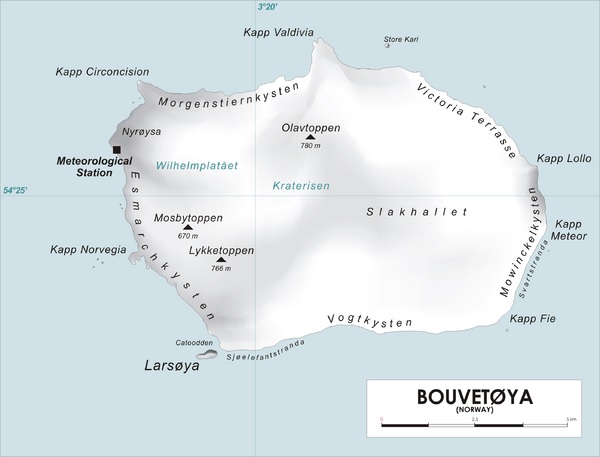
Press Release #1 (26 Oct. 2014) - Request Funding Intentions (7 Dec. 2014) - Press Release #2 (31 Dec. 2014) - Press Release #3 (8 Feb. 2015) - Pre-Press Release #4 (9 May 2015) - Final Press Release (9 May 2015)
Luigi IZ0AIS posted this
Bouvet movie on Youtube. It is the best ever footage I have seen,
circumnavigating the Island by helicopter
The movie starts and ends at the northern tip of the Island at Cape Valdivia
(my proposed camp site - landing permission granted by NPI)
From 2' to 3'20" one can see Cape Circoncision at the northwestern tip
of Bouvet (landing permission not granted)
From 3'50" to 4'40" one can see Nyrøysa (Westwindstranda
Beach) where NPI has installed its new container/lab
(landing permission at first granted to most southern part of Westwindstranda,
in 2016 revoked due to expanded colonies of breeding animals)
This
movie shows the extremely difficult surf conditions when landing
with zodiacs
Note that when the people try to leave the Island (3'40"), their zodiac
is attached by rope to another zodiac (situated in open sea)
Even with the help of the second zodiac, it is extremely difficult to get
off the Island
Now imagine a DXpedition with generators, radio's, amplifiers, antennas, masts,
shelter, food/water, heating...and people
It seems near to impossible to conduct a ham DXPedition safely this way
This topographical map is very detailed and guides you around Bouvet Island
Bouvet Island 2016 Project Presentation
26 October 2014
The most remote island on Earth
2,500 km south-southwest of South Africa
1,700km north of Antarctica
Objectives:
A 3 month DXpedition carried out by 1 person
Target: 100,000 QSOs
(click on the above pictures to locate Bouvet Island as seen
from the 3 most populated Amateur Radio regions)
Bouvet
Island current Temperature and Weather forecast
|
Executive Summary
The ham radio world has been waiting for a proper DXpedition
to Bouvet Island for many years. I have the planning skills,
experience and determination to make this happen to everyone's
satisfaction. But I need financial support well in advance
in order to secure the required transport |
If you are not in a hurry, explore the complete webpage starting here. Exciting? You bet!
Pictures and background information
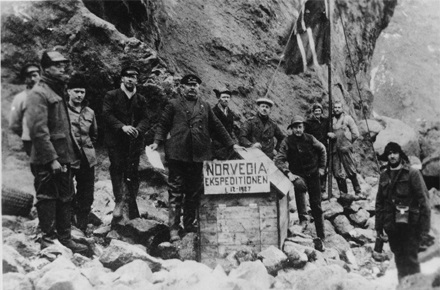
During the 1927 Norvegia expedition, Norway officialy laid claim on Bouvet Island
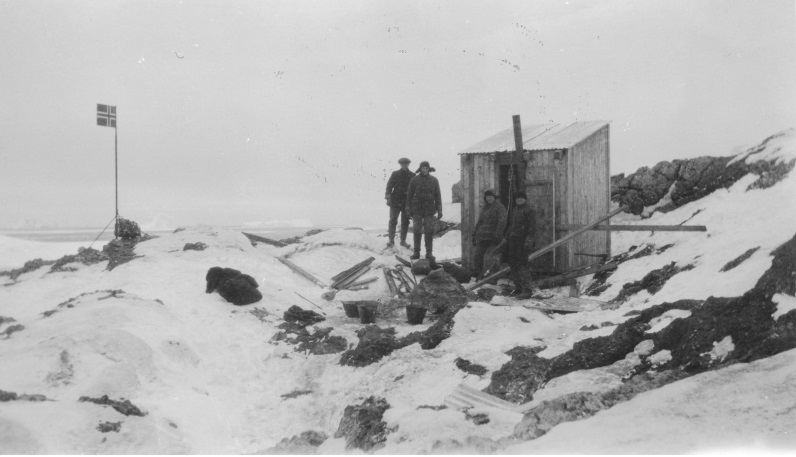
A hut was built on Cape Circoncision
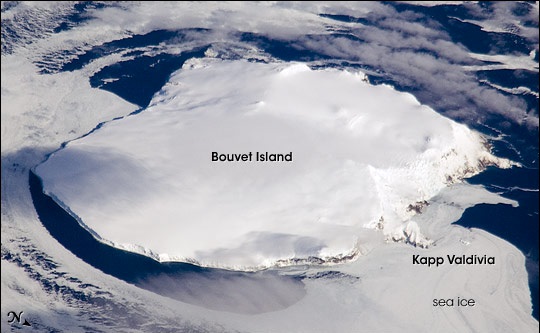
Picture taken from the International Space Station
on 12 September 2008
The following pictures were taken in 2006 by Dolph Kessler, a Dutch professional photographer
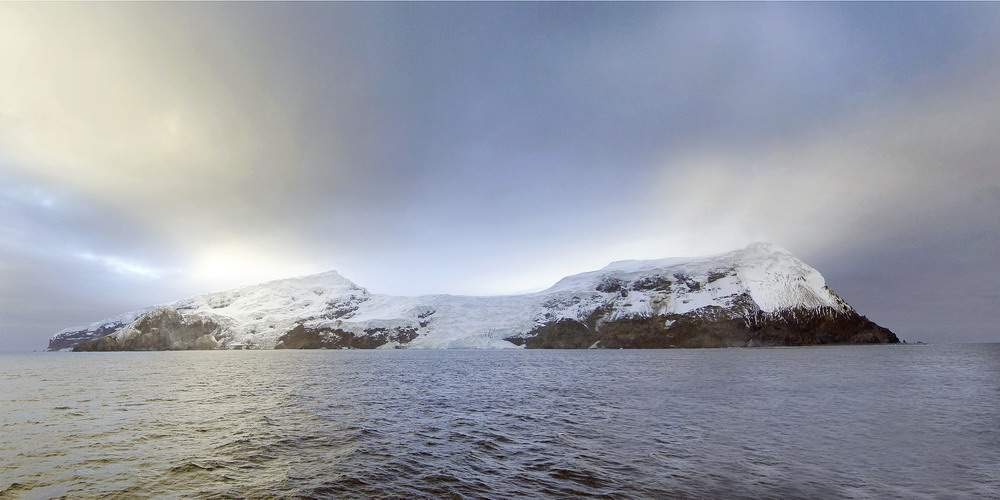
Picture taken approx. from the north side
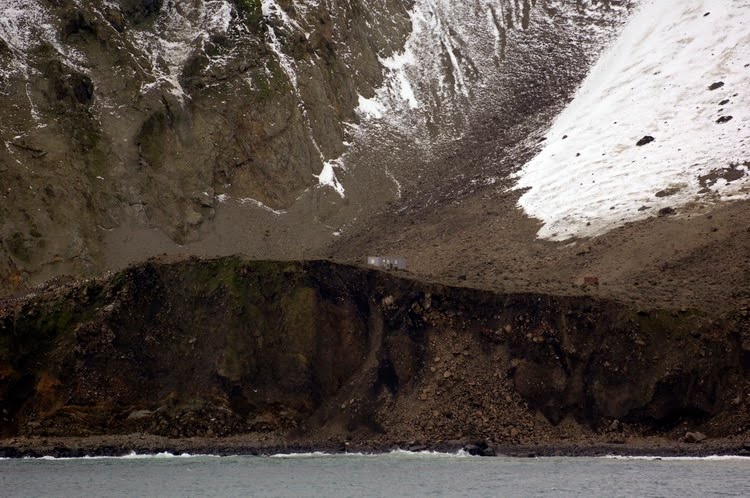
The Nyrøysa nature reserve on the northwest side of the
island
with the Norwegian Research Station (container) visible at the center
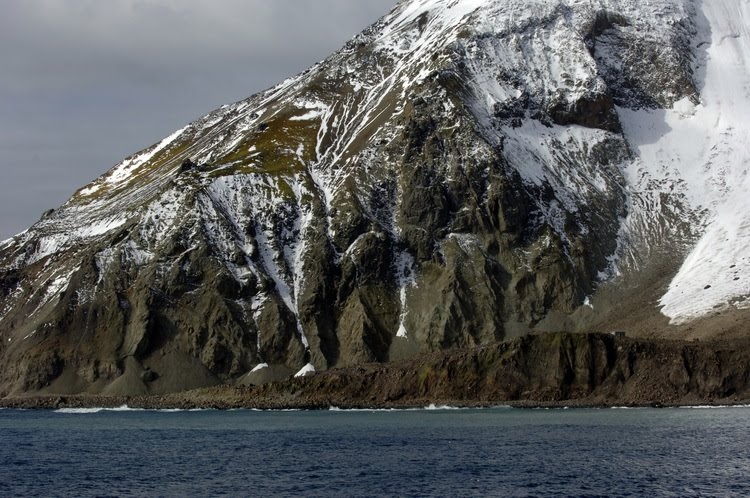
Research station still visible. It vanished into the sea probably after an earthquake
in 2006
The Norwegian Polar Institute (NPI) built a new station in January 2014
More Bouvet pictures by Dolph Kessler can be seen at:
http://www.panoramio.com/user/5061631/tags/Bouvet
(web archive)
https://www.dolphkessler.nl
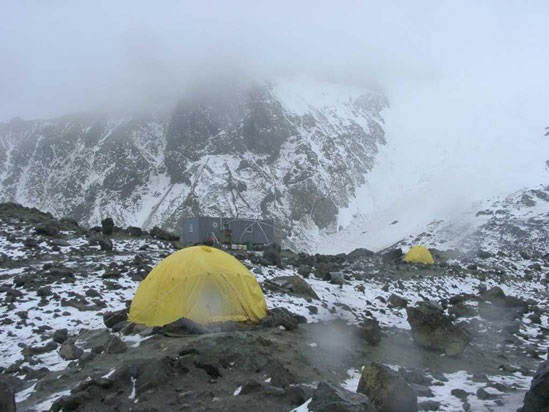
Scientists working at Bouvet, sleep in tents
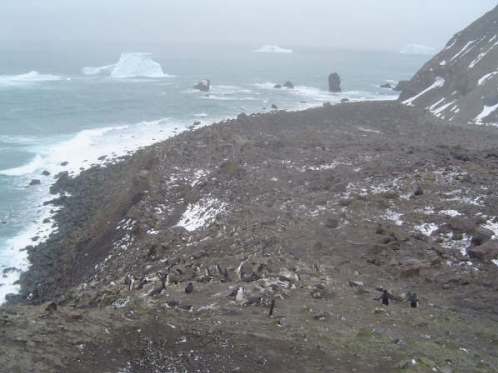
Penguins breeding on Nyrøysa
Small icebergs are still around in early summer season
Every respectable island has its own mystery.
So does Bouvet. Here is some interesting reading:
https://mikedashhistory.com/2011/02/13/an-abandoned-lifeboat-at-worlds-end/
Currently Bouvet ranks #3 on the DXCC Most
Wanted List
In 2015 it will move to #2 after Navassa has been activated
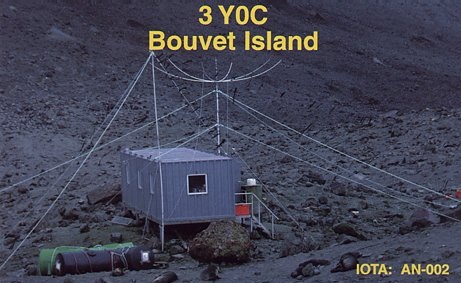
The late doctor/astronaut Chuck Brady N4BQW put up a Mike Traffie
HX-5B
HEX-BEAM at the research station during a December 2000 - March 2001 expedition
Chuck made 16,828 QSO's interwoven between his other duties and responsibilities
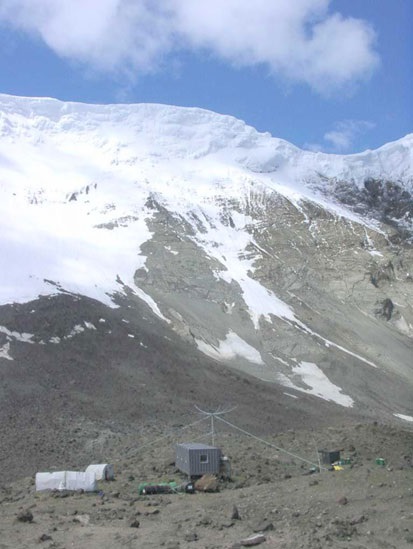
All radio amateur operations have taken place from Nyrøysa
The view towards Asia is completely blocked
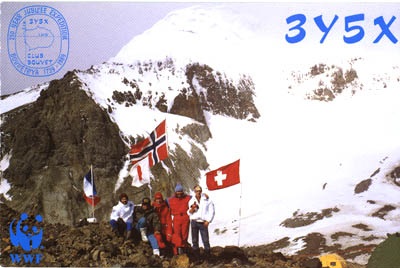
The 3Y5X operation by Club Bouvet in December 1989 - January 1990
logged nearly 50,000 QSO's
More information on all Bouvet ham radio operations
can be found at:
https://web.archive.org/web/20130120220550/http://dxccsleuth.wordpress.com/2012/09/10/bouvet-island-the-lonliest-place-on-earth/
What is the best radio location for a 1 man expedition on Bouvet?
| All radio operations so far have taken place from the nature
reserve Nyrøysa, located at the northwestern side of the island.
This location is completely blocked by a steep slope towards the northeast-east-southeast.
It is also breeding ground for seals and penguins, a no go. Cape Circoncision at the northwestern tip of the island is snow-free during summertime, giving coverage to most continents. Due to penguin colonies, access cannot be granted. The eastern slope (Slakhallet) can be a good alternative to cover most of the dense ham radio populations. This is a slope, not sure how the ice surface behaves during summer time and it is not advisable for one person to stay on the slope. For a large group of operators, this is probably the best choice. To cover all continents without obstructed view, the best option would be the summit plateau near Olaftoppen at near 780m altitude. However, the summit is mostly covered in clouds, this is not an option for helicopter flights. In 2012, the summit was reached by an international group, climbing their way to the top to place a time capsule filled with visions for the future by people from all over the world. In this Youtube video, Bouvet and the reaching of the summit can be seen starting around minute 3: https://www.youtube.com/watch?v=LSN-ah2jH2s&list=PL2A9F0B610581FDEA&index=1 For 1 person, the best snow-free radio location during summertime is Cape Valdivia, the most northern tip of the island. A recent survey showed there are no penguin colonies nor seals on the cape. Seabirds reside on the lower cliffs and won't be bothered by human presence. Remember, the whole of Bouvet is a nature reserve and thorough evaluation is made by the authorities before granting access. The view towards the ham world is fantastic: unobstructed all around except for KH6-VK-ZL. Surely there must be a bent or long path to accomodate these regions. |
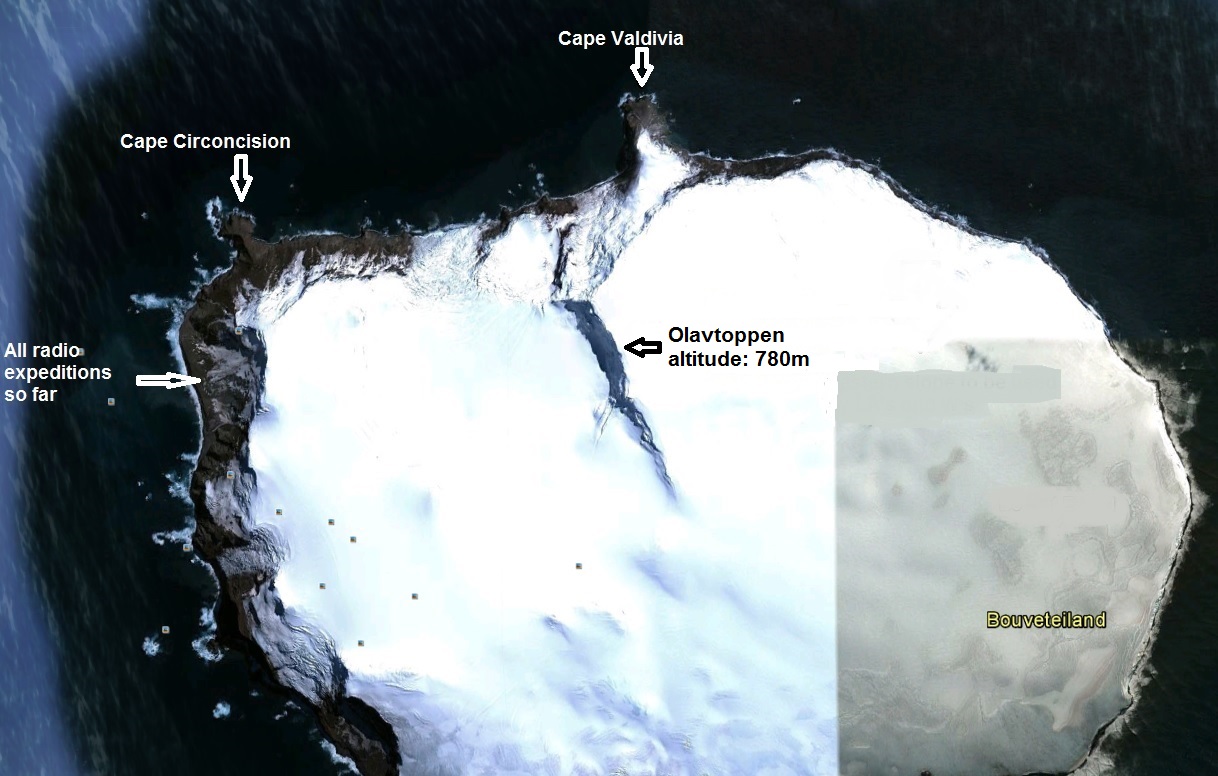
Cape Valdivia at north side of the island
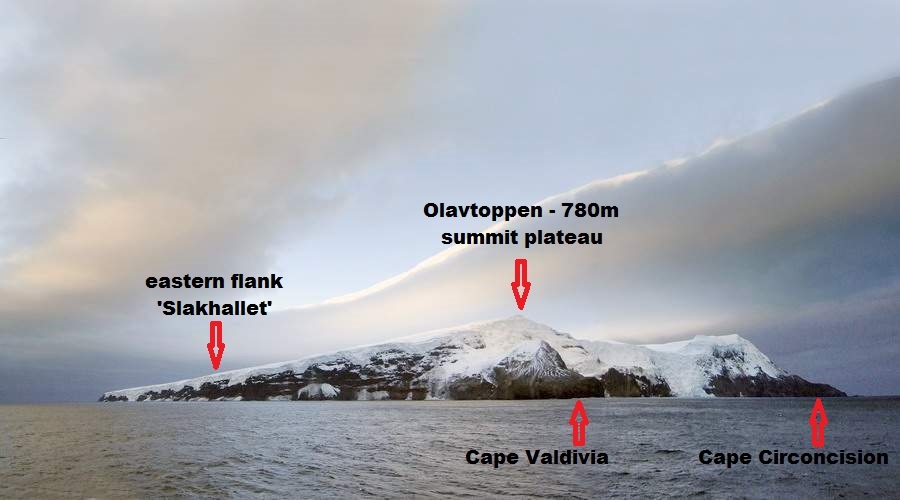
This picture by Dolph Kessler is taken approx. from the north-northeast side
of the island
The eastern flank/slope is probably useful for radio operations by a larger
group
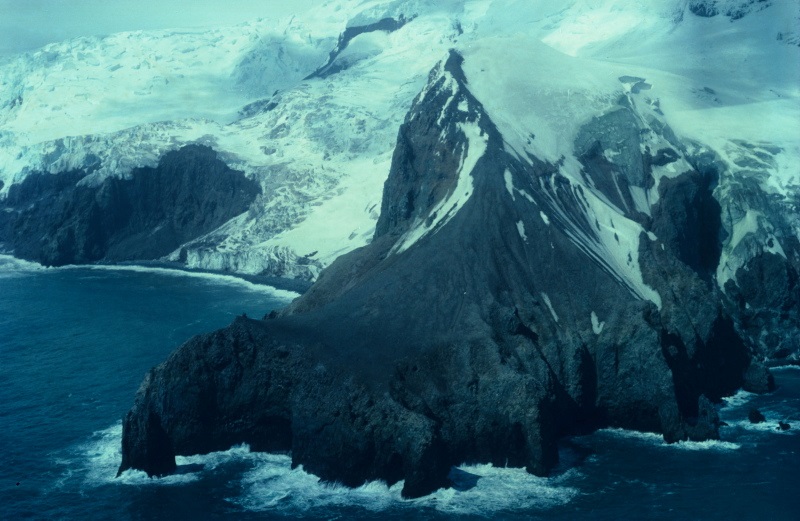
A close-up from Cape Valdivia
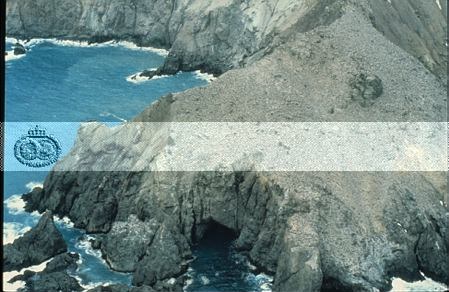
A close-up from Cape Circoncision
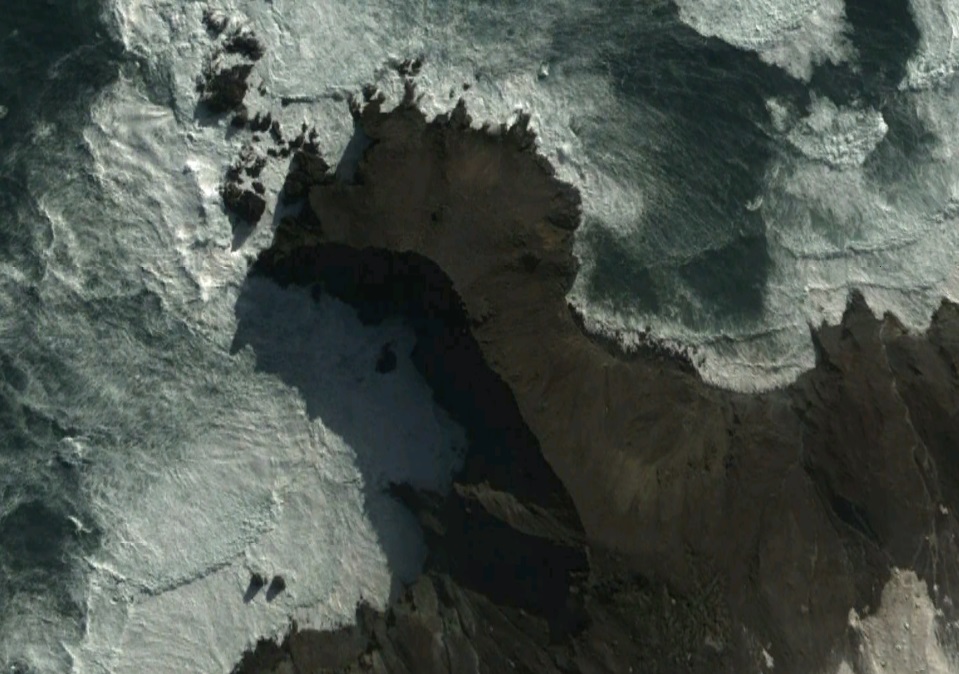
Cape Circoncision as seen from Google Earth
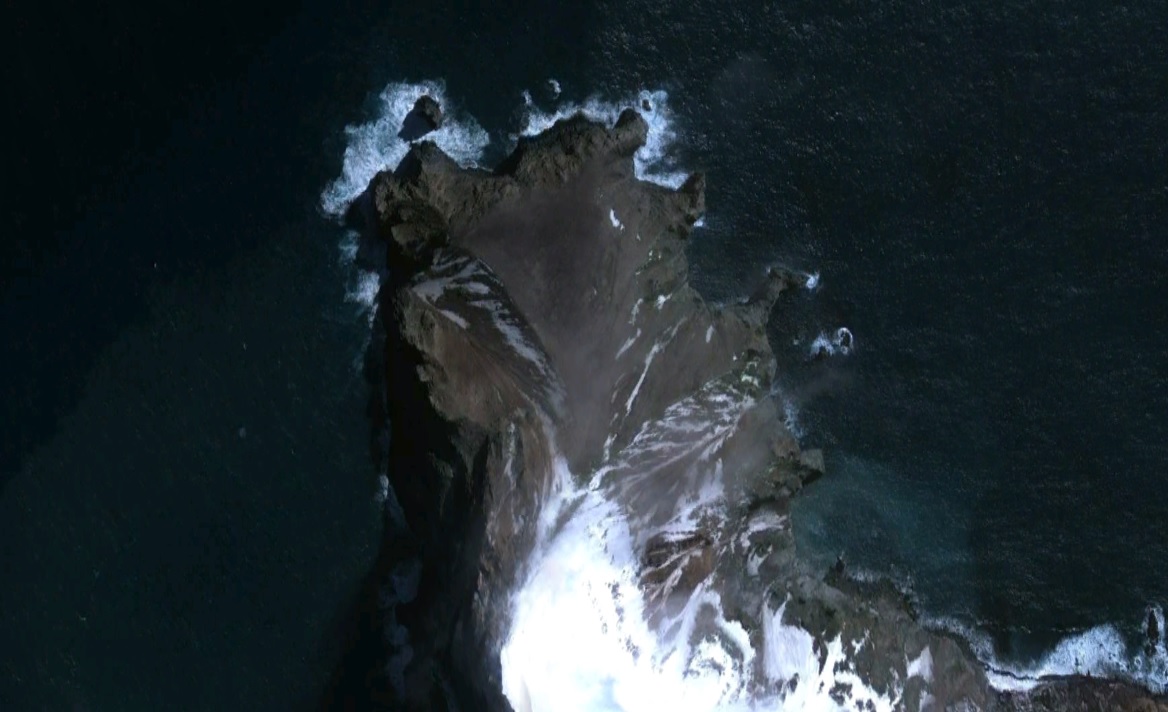
Cape Valdiva as seen from Google Earth
How to get to Bouvet?
How to land on Bouvet?
How to survive on Bouvet for 3 months?
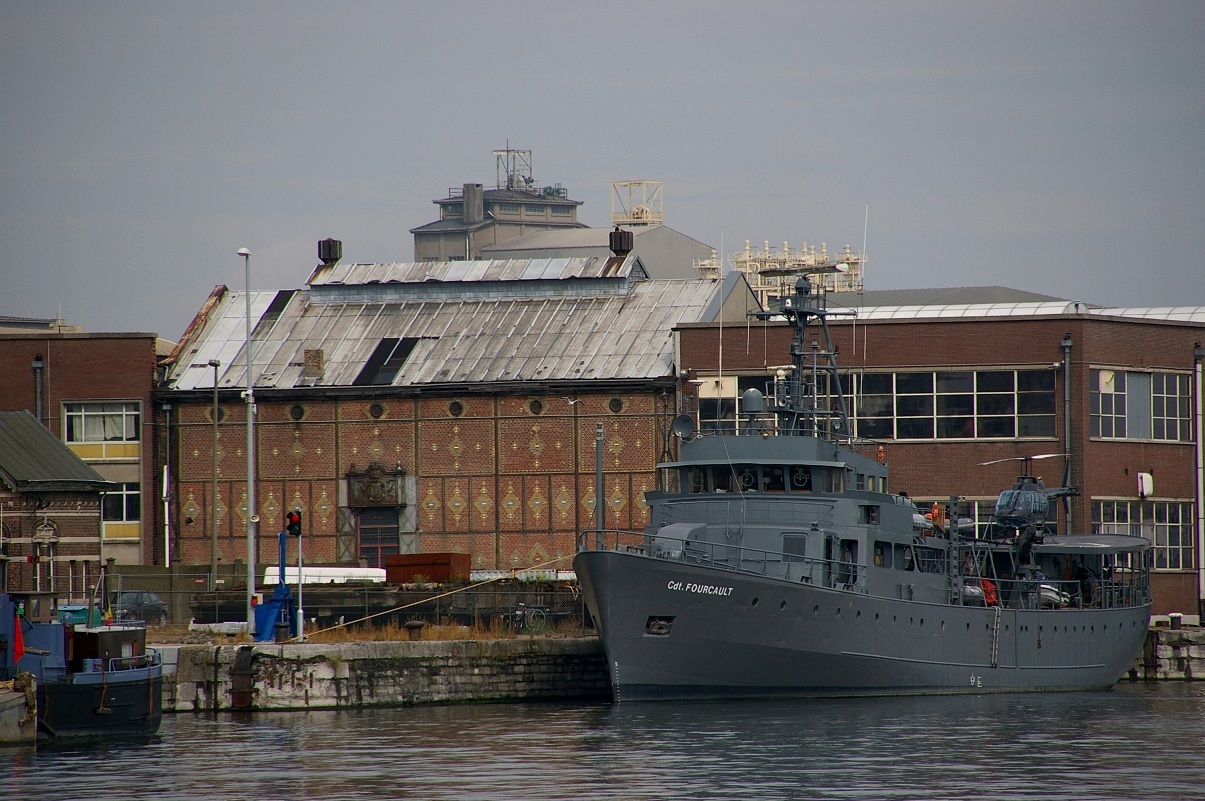
This is the Cdt. Fourcault. I visited the ship
in April 2013 and had a lengthy meeting
with the captain. The ship has a helicopter, necessary for landing on Bouvet
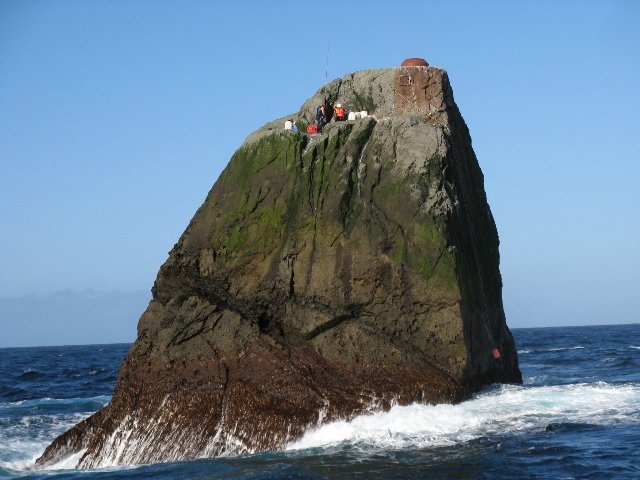
The Cdt. Fourcault successfully landed a team of ON-hams on another
challenging island,
Rockall Island in 2011. For Bouvet, the chopper is a must
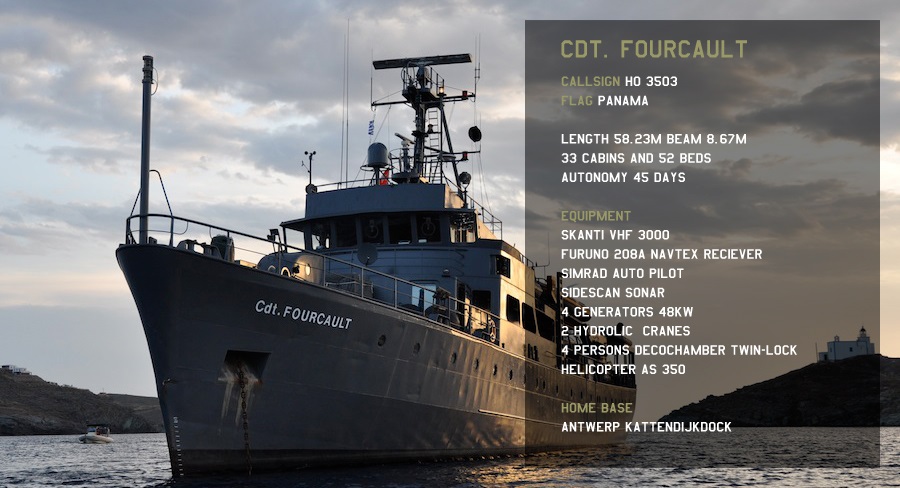
Technical details on the Cdt. Fourcault (http://www.fourcault.be)
The Cdt. Fourcault will be committed to a dedicated
Search and Rescue Operation for this DXpedition, should the need arise
Here some more details on the personalia and capabilities of the Cdt. Fourcault
group: https://www.seatec.be
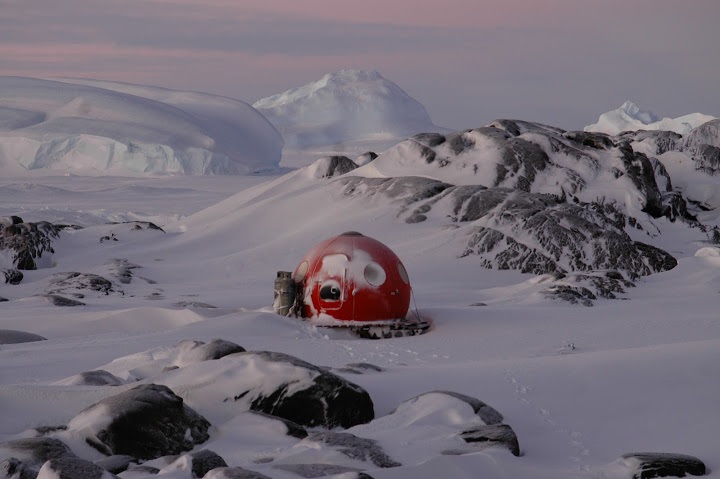
Shelter. At first I had a look at containers, but these are too heavy for lifting
by helicopter
This shelter is made by https://icewall.com.au/igloo-satellite-cabin
and it can be lifted by a helicopter
Light weight, good insulation, tested under the
severest possible weather conditions
These 'Igloos' have extensively been used on Antarctica, Heard Island,...
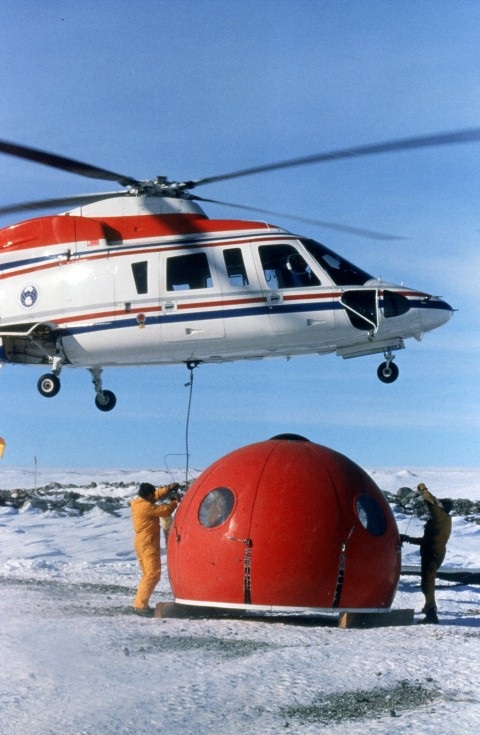
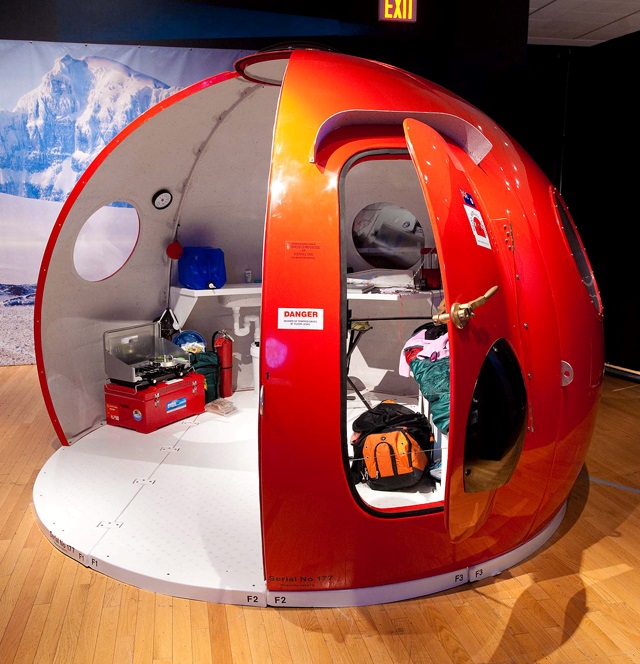
The Igloo Satellite Cabin has perfect features for Bouvet
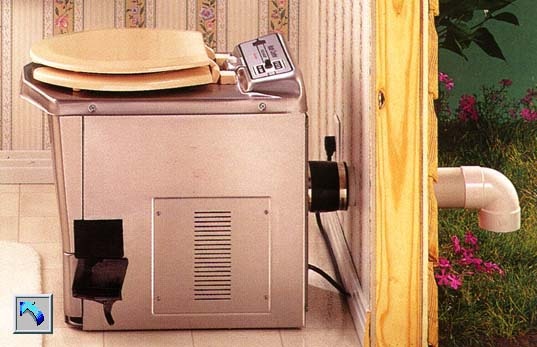

Electrical toilet. No human waste can stay on Bouvet, and a 3 month stay requires
a drastic approach.
This toilet burns human waste to ashes. I can hear the jokes coming guys...
(yes, I will take a non-electrical backup loo)
(no, I won't take a dishwasher nor washing machine)

Electrical heating
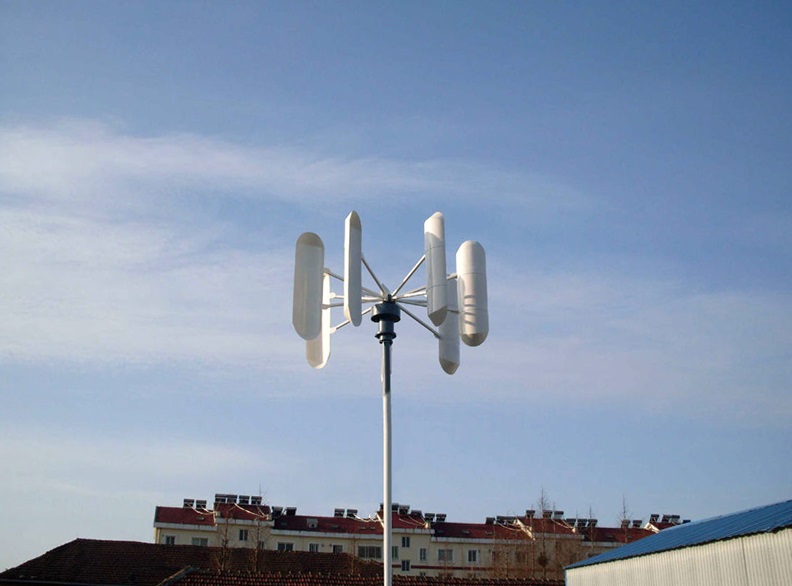
Vertical Axis Wind Turbine to generate energy for the backup batteries
(in case the generators fail - of course a more rigid model than this one)
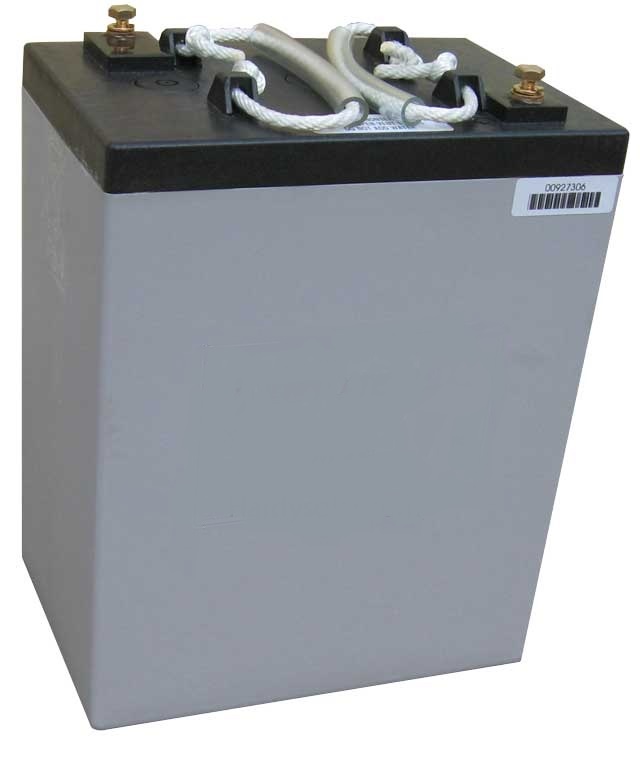
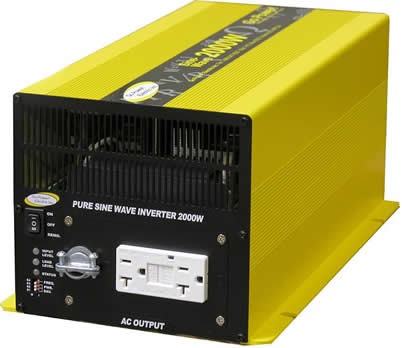
Heavy duty batteries for backup power and (RF clean) Inverters
Antennas
With the Location, Propagation, Climatic conditions and KISS principle in mind,
the Antenna Arsenal will be flexible but effective
Good signals are a priority, and Antenna issues are currently
being discussed with a team of experts
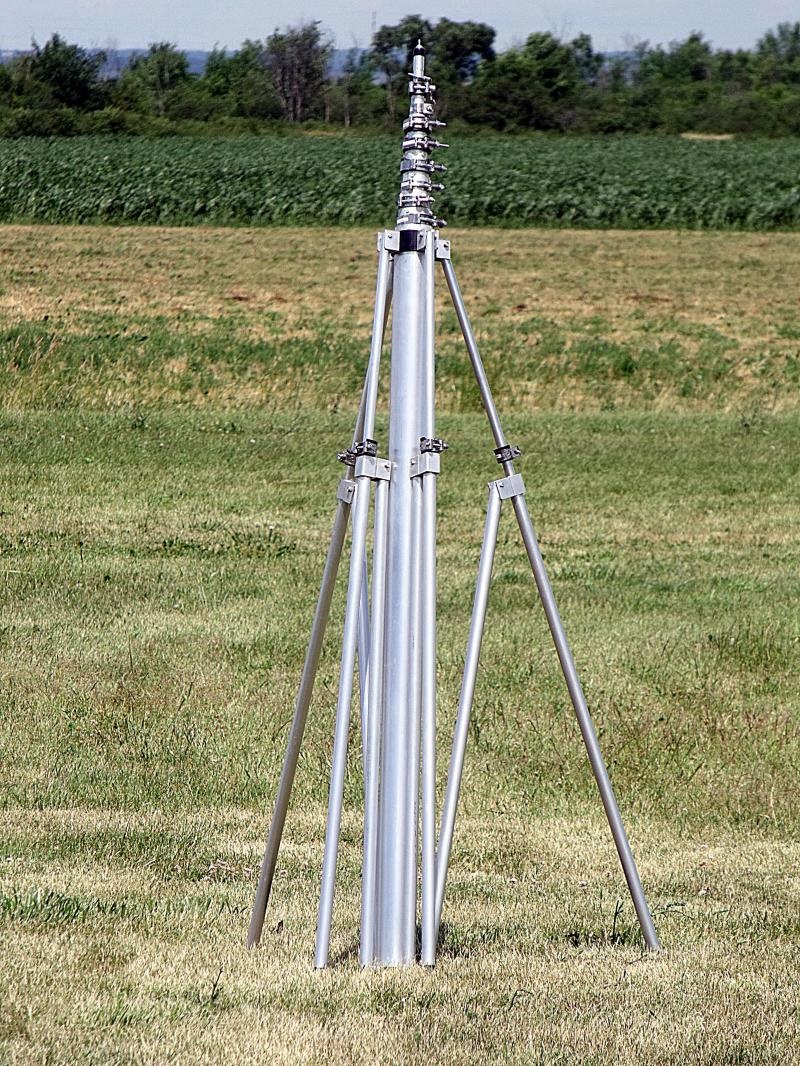
Aluminum telescopic masts,
if well guyed, will survive the Bouvet winds
They can serve a multitude of functions
For 80 and 160m separate inverted-L antennas will be used
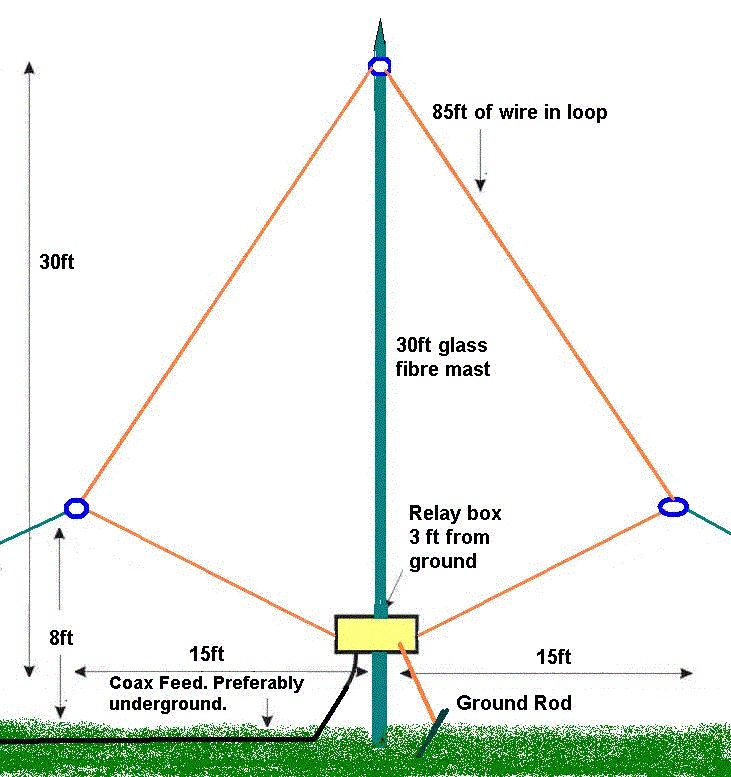
K9AY custom made array for low bands reception
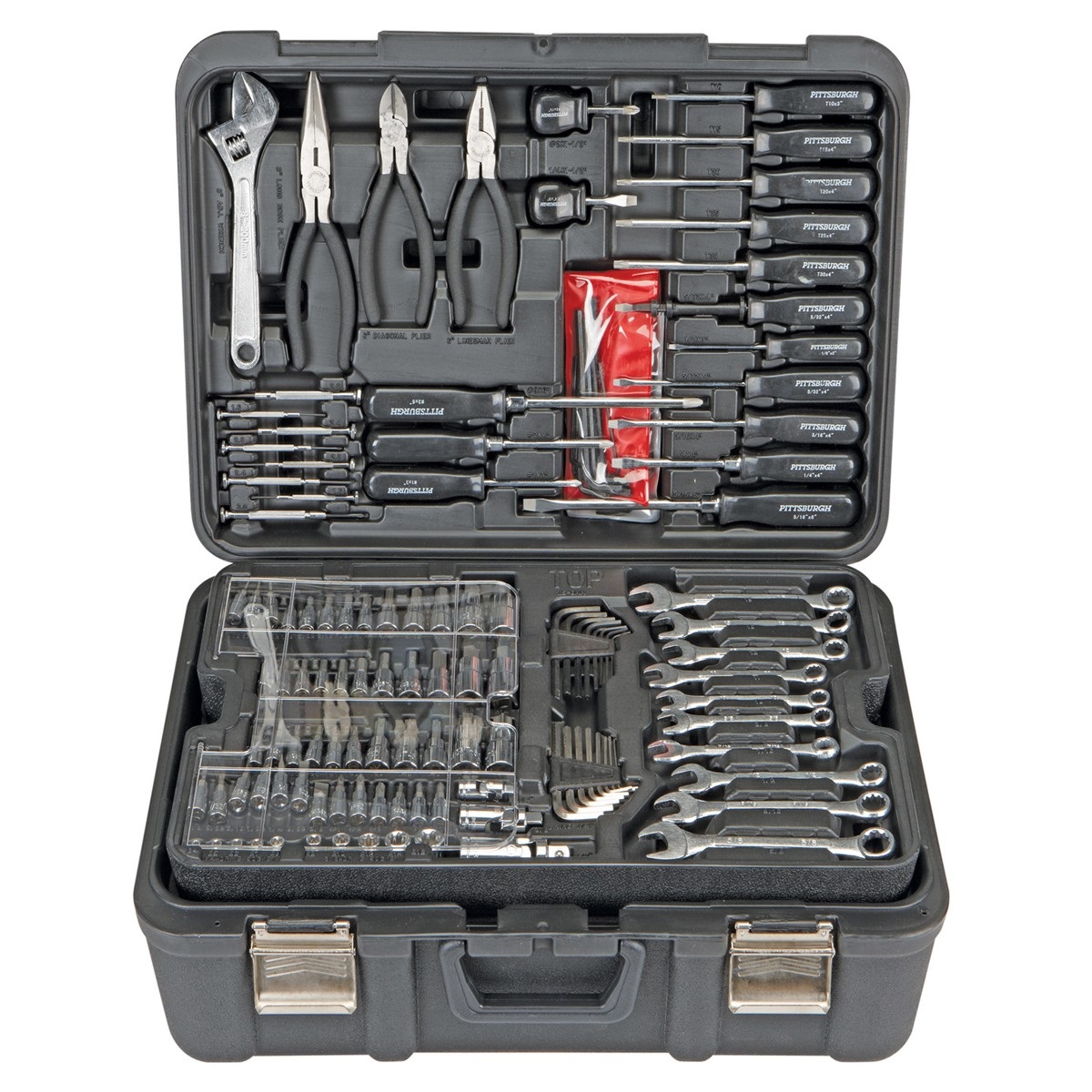
Tools, basically everything to keep the station and shelter running
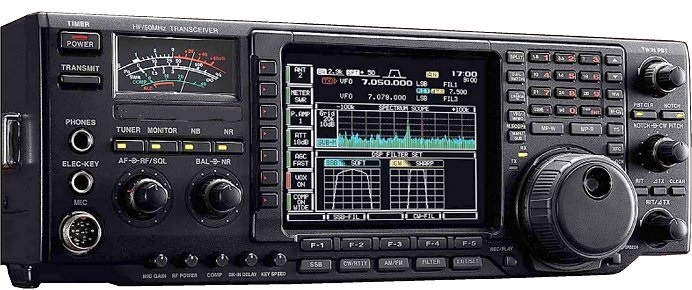

Radio's
I will use radio's I am familiar with
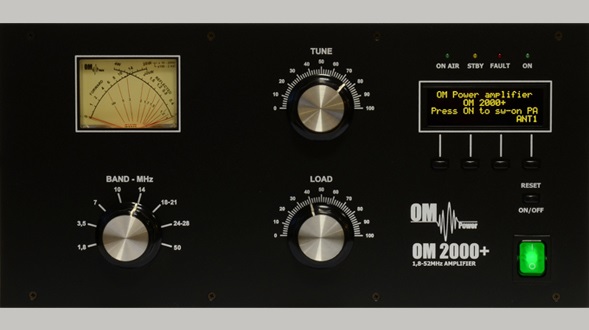
Amplifiers
Bouvet is probably a long way from your ham shack
This is the first deal I made, almost 2 and a half years ago
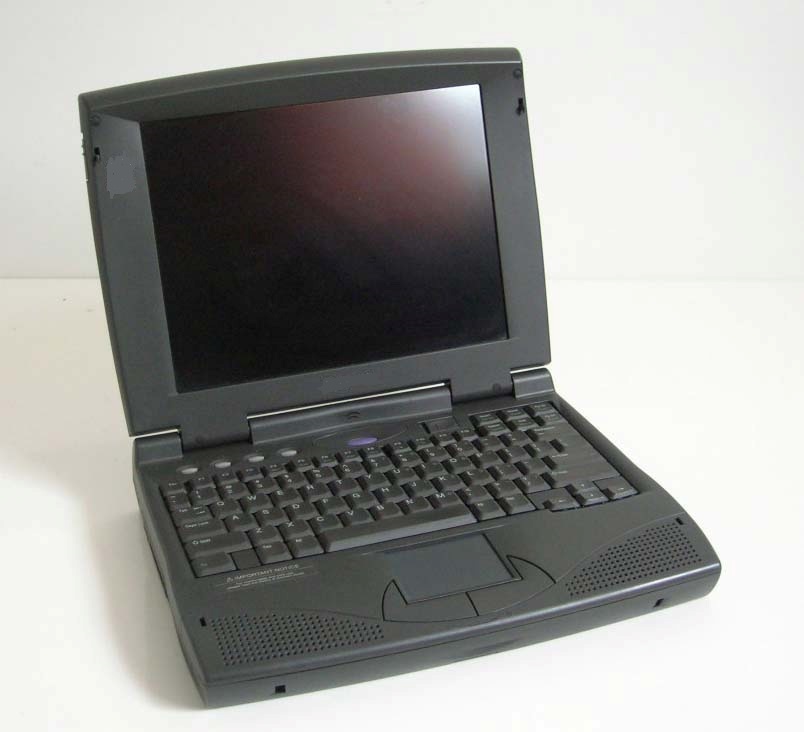
Laptops
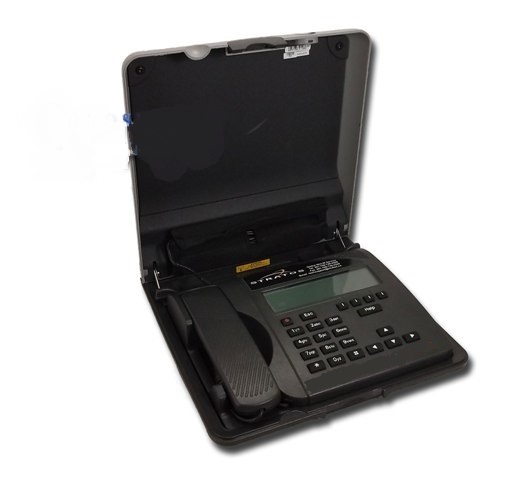
Satellite phones
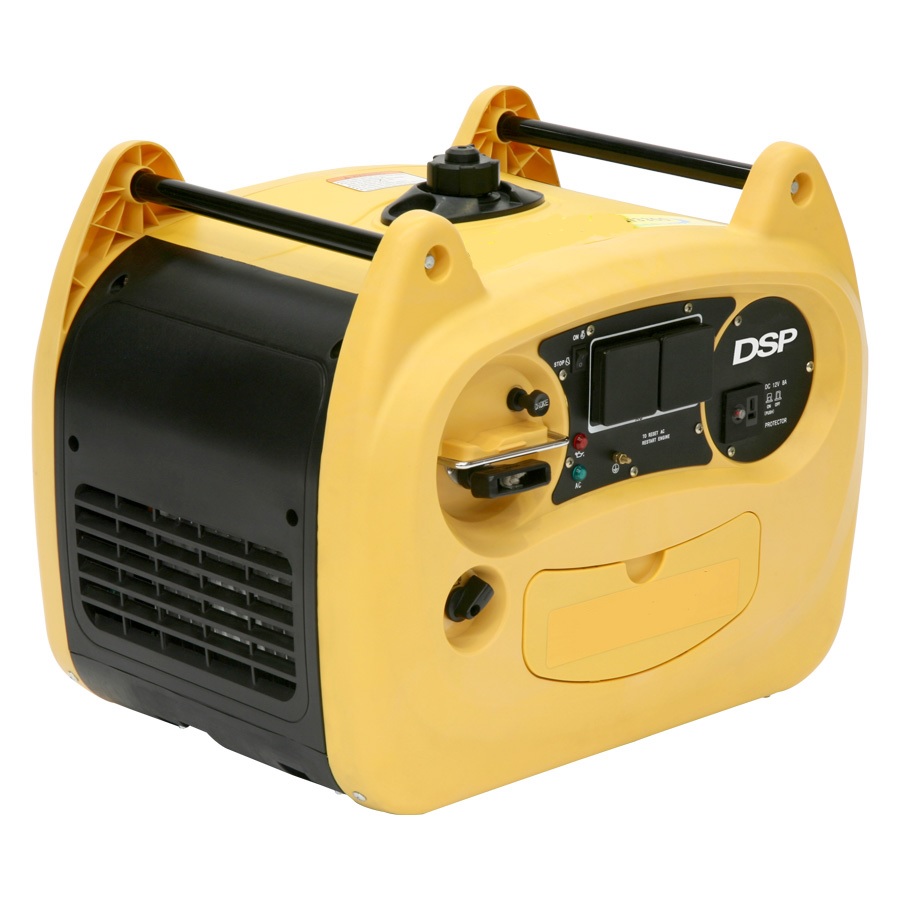
RFI-clean generators

Shelter for generator
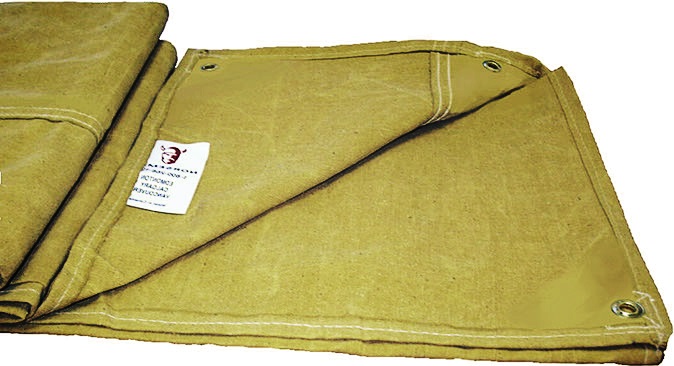
Rugged tarps against oil and gasoline spilling
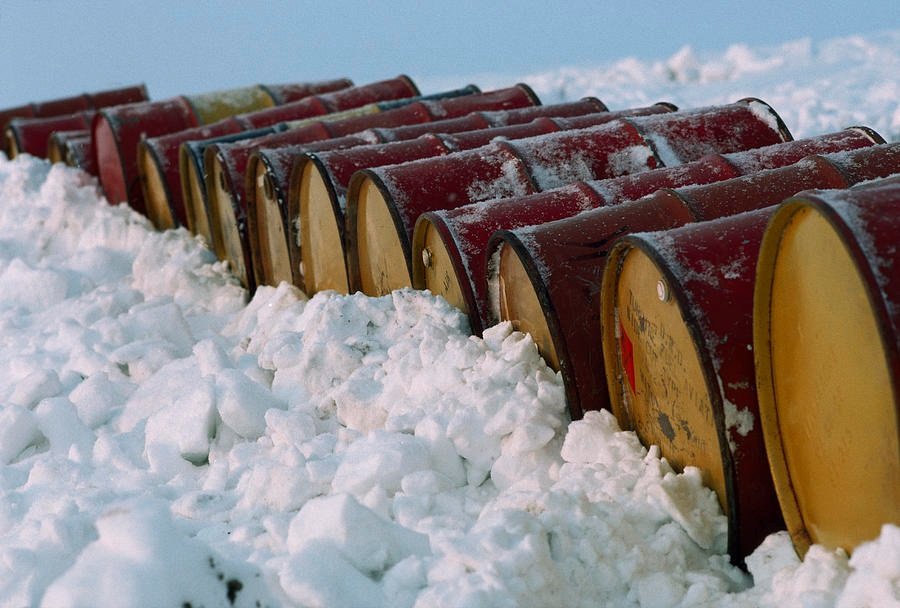
24 gasoline drums (200 liter drums)
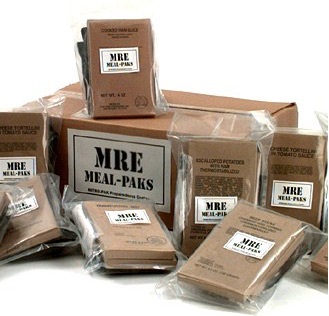
Practical food supplies for 100 days and fresh fruit
(I am aware I cannot live on MRE's for 3 months)

Water for 100 days and extra water for a quick bucket wash
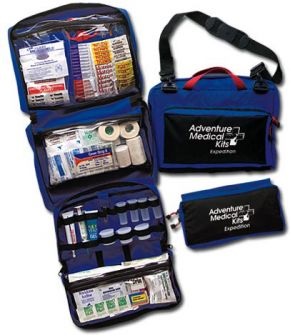
Medical emergency kit
Safety is high on my priority list
An in depth emergency medical training course is at the absolute
top of this list
A satellite phone (and backup units, powered by batteries and wind turbines)
will be used
for emergency communications with medical staff back home, should the need arise
Should worse come to worse, and as already stated above, the vessel Cdt. Fourcault
will be dedicated to Search and Rescue Operation during this DXpedition
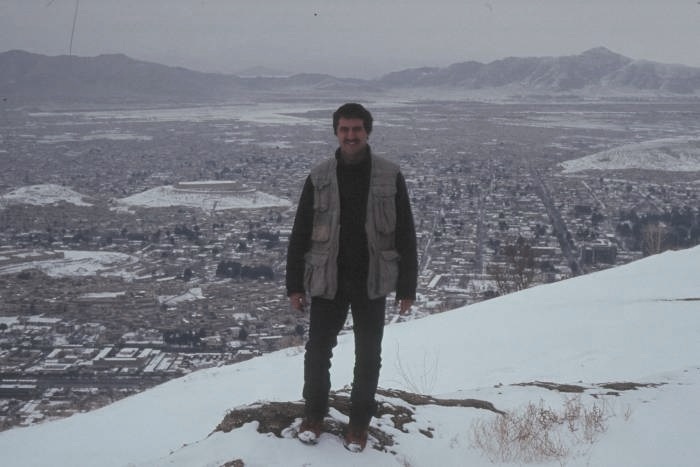
Appropriate sub-polar clothing... lesson learned when I was standing on TV-hill
at
an altitude of 2000m above sea level, overlooking Kabul-Afghanistan (winter
2000)
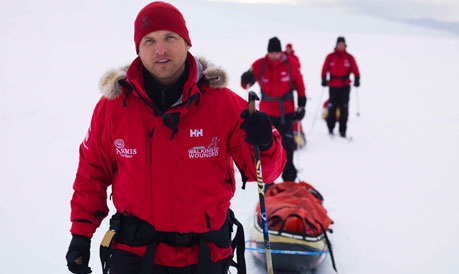
This looks much better
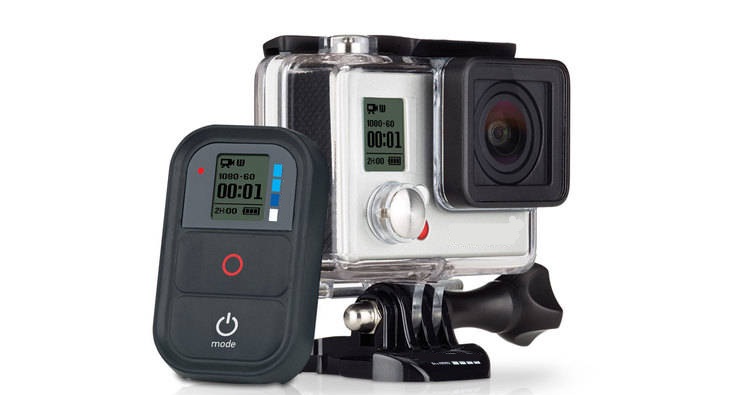
Film material
What will the Bouvet DXpedition cost?
|
The budget is put at 250,000 euro (285,000 USD). Almost 3/4 of this amount goes to the vessel and helicopter flights. I can cut the ship costs only because it
will drop me off, and pick me up after 3 months. It does not stay anchored
near Bouvet. A Bouvet operation by a large group would probably surmount
450k euro. |
Why a one man DXpedition to the most remote place on Earth?
| If anyone can think of a better way for me to celebrate
my 50th birthday, 25 years in ham radio and making 100,000 QSOs with a little
adventure on the side, you have my attention. (many showed me the way, but VP6BR showed me some more...) Follows a quote by Martti Laine OH2BH which I find pertinent to the Bouvet project: The legendary Muhammad Ali once said: "Impossible is just a big word thrown around by small men who find it easier to live the world they've been given than to explore the power they have to change it. Impossible is not a fact. It's an opinion. Impossible is not a declaration. It's a dare. Impossible is potential. Impossible is temporary. Impossible is nothing." |
Target QSO total: 100,000
CW-SSB: all HF bands (except 60m)
RTTY: 2 or 3 bands
6m band: probably not
EME: probably not
SSTV: probably not
PSK: not
Satellite: not
Hellschreiber: not
Time schedule: 24/24-7/7 (with adequate rest periods)
Log: daily uploads to Clublog, LoTW, e-QSL
QSL: bureau, direct (OQRS)
Time frame of operation: half January through half April 2016
|
The unique one-man effort over a 3 month time period
will show how this different approach will make more people happy, Why? It is in the scope of this project: 1. to work as many UNIQUE stations as
possible 2. to work those stations that need Bouvet on certain bandslots/modes to achieve 9 band clean sweeps; 3. to provide SSB, CW and RTTY contacts for those needing certain modes. For all audiences, I will have plenty of time. It will be the primary reason for me being at Bouvet, making radio contacts, as many as possible. For this approach to be successful, it
needs one or two things: I am confident I can count on the fair play from the deserving DXers to just work Bouvet where they need it. Resulting in being able to work the pileups down to the very last QRPp and mobile station and at the same time making the 9 band hams reach their objective. |
| Every cent of this DXpedition will pass through the non-profit
organization 'Peter I - Antarctica Expedition 1994' (renamed 'Antennes zonder
Grenzen - Antennes sans Frontières' in 1995). This organization was formed in 1993 by Peter ON6TT. Goal was to make every dollar spent for the 3Y0PI DXpedition accounted for and visible to the entire expedition team. Good accounts make good friends. |
Why seek sponsorship from one exclusive source?
| Primarily for practical reasons. A zillion things have
to be done in advance, and getting the finances right before such an endeavor
takes place is a significant hurdle out of the way. At first I looked at the possibility to obtain sponsoring from outside the ham community, in the corporate world. The corporate world: Discovery Channel, National Geographic, Red Bull... I threw out a fish at Red Bull... the answer was what I expected, and showed it would be extremely slow-going with the huge corporations... having to pass a chain of offices not aware of what ham radio is about, it would take years before funding could ultimately be obtained. A well known DXer suggested: contact Virgin (Richard Branson, he certainly is in for a bit of adventure). Another hurdle with the corporate world is publicity. What do I have to offer them? Not much at first sight, and a camera crew on my tail and on the island is not part of the concept. It will need some thinking outside the box for the corporate world to go along with this project. So, abandon the Bouvet idea? There is not one day that passes without Bouvet being on my mind. I want to do this. |
How can exclusive funding work? Will there be revenues to the exclusive sponsor?
|
If exclusive sponsorship is secured, the
Bouvet logistical process can commence. At that time, additional sponsorship
will be sought from within the DXing ham community. Funds obtained this
way, should entirely return to the primary (exclusive) sponsor. Update 26 February
2015: Here
is a page showing who I am and where I have been. I care about
people and how they present themselves on the bands. Hence I wrote Operating
Practice and Ethics
and Operating Procedures for the Radio Amateur (with ON4UN). I
was also involved with the DX
Code of Conduct project. * if the e-mail load gets too high, I will
not be able to respond to each and everyone of you. Thanks for your understanding
|